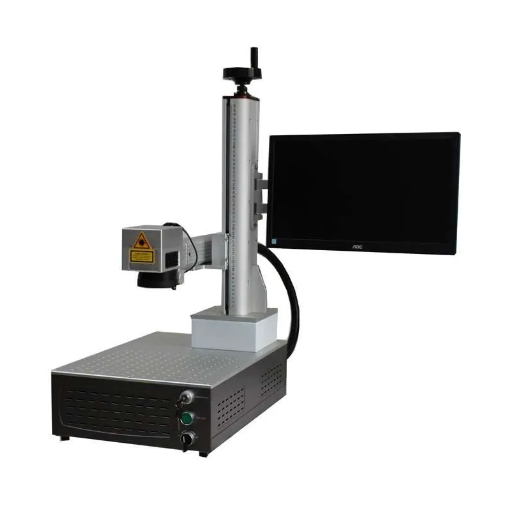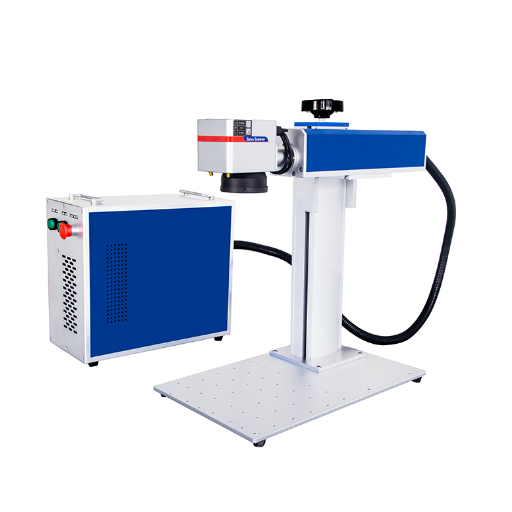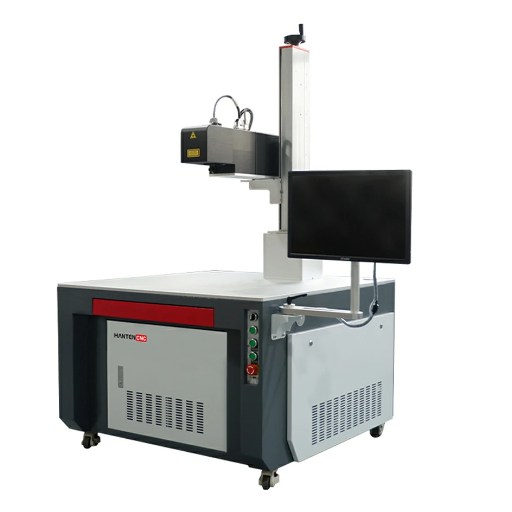3D Laser Marking Machine
Home » Laser Marking Machine » 3D Laser Marking Machine
3D Laser Marking Machine is a cutting-edge technology that allows for precise and detailed 3D engraving on various materials, including metal, glass, plastic, and crystal. It is ideal for industries such as jewelry, electronics, and customized products. Its ability to create deep, high-resolution markings offers unique advantages over traditional engraving methods. As a leading manufacturer and distributor in China, our company provides a wide range of 3D laser marker machines to meet diverse production needs. Whether you need high-precision engraving for small-scale production or a machine for large-scale operations, we have the perfect solution.
Get Information on Fiber Laser Engraving Machine Manufacturers
Find Your 3D Laser Marker Machine
When selecting a 3D laser marker machine, factors such as laser power, marking speed, and the type of material you’re working with must be considered. Our 3D fiber laser marking machines are known for their precision and ability to handle intricate and deep metal, plastic, ceramic, and glass engravings. Contact us to explore our full range of 3D laser markers and find the match for your production requirements.
3D Laser Marking Machine for sale
Discover our wide selection of 3D laser marker machines designed for high-precision metal, glass, plastic, and ceramic engraving. With fiber laser technology, these machines deliver deep, detailed markings for both small and large production runs.

- Precise 3D Engraving on Small Parts
- Ideal for Fine Detailing and High-Resolution Marks
- Compact Design for Small-Scale Production

- Perfect for Engraving Metals and Plastics
- Fast Marking Speed for Efficient Production
- Compact and Versatile for Various Applications

- High-Power Solution for Larger Marking Areas
- Ideal for Heavy-Duty Industrial Applications
- Capable of Deep Engraving on Hard Materials

- Suitable for Marking Larger and Thicker Materials
- High-Speed Marking for Mass Production
- Enhanced Depth Control for Industrial Marking

- Perfect for Metal, Plastic, and Ceramic Engraving
- High Precision with Deep Engraving Capability
- Efficient for Bulk Production and Complex Designs

- High-Power for Large Industrial Marking Tasks
- Excellent for Thick Materials and Deep Engraving
- Fast and Durable Solution for Heavy Production
3D Laser Marking Machine Technical Parameters
| Machine Type | Laser Power | Laser Type | Marking Area | Marking Speed | Engraving Depth | Application Materials |
|---|---|---|---|---|---|---|
| 20W 3D Laser Marking Machine | 20W | Fiber Laser | 100mm x 100mm | Up to 3000mm/s | 0.01mm - 0.1mm | Metals, Plastics, Glass, Wood |
| 30W 3D Fiber Laser Marking Machine | 30W | Fiber Laser | 150mm x 150mm | Up to 3500mm/s | 0.01mm - 0.15mm | Metals, Plastics, Acrylic, Wood |
| 50W 3D Laser Marking Machine | 50W | Fiber Laser | 200mm x 200mm | Up to 4000mm/s | 0.01mm - 0.2mm | Metals, Plastics, Ceramics, Wood |
| 100W 3D Fiber Laser Marking Machine | 100W | Fiber Laser | 250mm x 250mm | Up to 5000mm/s | 0.01mm - 0.3mm | Metal, Plastic, Ceramic, Glass |
| 150W 3D Laser Marker Machine | 150W | Fiber Laser | 300mm x 300mm | Up to 6000mm/s | 0.01mm - 0.5mm | Metals, Plastics, Leather, Ceramic |
| 200W 3D Laser Marker Machine | 200W | Fiber Laser | 350mm x 350mm | Up to 7000mm/s | 0.01mm - 0.7mm | Metal, Ceramic, Stone, Wood |
3D Laser Marker Machine Components
Fiber Laser Source
The fiber laser source is the core component of a 3D laser marker machine. It generates a high-powered laser beam for engraving and etching on materials like metal, plastic, ceramic, and glass.
Galvo Scanner
The Galvo scanner is a key component that controls the movement of the laser beam across the workpiece. It uses mirrors to direct the laser with high precision, enabling the 3D laser engraver to create detailed patterns and marks on curved or uneven surfaces.
Laser Lens and Focusing Optics
The laser lens and focusing optics are essential for controlling the focal point of the laser beam. They focus the laser on a specific point on the material's surface, ensuring the marking or engraving is sharp and clear.
Worktable or Rotary Axis
The worktable or rotary axis supports the workpiece during the marking process. For 3D laser engraving, a rotary axis is often included to allow for engraving on cylindrical or spherical objects.
Power Supply
The exhaust system removes fumes, smoke, and debris generated during the laser engraving.
Laser Safety Features
Laser safety features are crucial in preventing accidents and protecting operators. These can include safety enclosures, laser shields, and emergency stop buttons.
Frequently Asked Questions
3D laser marker machines can be used on a wide variety of materials, including metal, plastic, ceramics, glass, wood, and composite materials. The versatility of the laser allows for intricate and detailed markings on 3D shapes and complex surfaces.
The primary difference is that 3D laser marker can engrave on non-flat, curved surfaces, and irregular shapes like cylinders or spheres, while 2D marking is restricted to flat surfaces. 3D marking provides more flexibility for engraving on multi-dimensional objects.
A 3D laser marker machine utilizes a fiber laser to emit a concentrated beam of light. The laser beam is directed through a Galvo scanner and focused onto the surface of the object using focusing optics. The machine’s software adjusts the engraving depth and the path of the laser for 3D applications.
Yes, one of the primary advantages of a 3D laser marker machine is its ability to engrave on curved or spherical objects, such as cylinders, spheres, and other irregular shapes. This is made possible by using a rotary axis or specialized fixtures that rotate the object for continuous marking.
3D laser marker machines offer several advantages, including high precision, speed, the ability to mark complex shapes, minimal wear on the machine, and the ability to engrave on a wide range of materials. It also provides better durability of markings compared to traditional engraving.
Yes, regular maintenance is necessary to ensure optimal performance. This includes cleaning the lens and mirrors, checking for cooling system efficiency, and replacing the laser source after extended use. Regular checks for software updates and calibration are also recommended.

